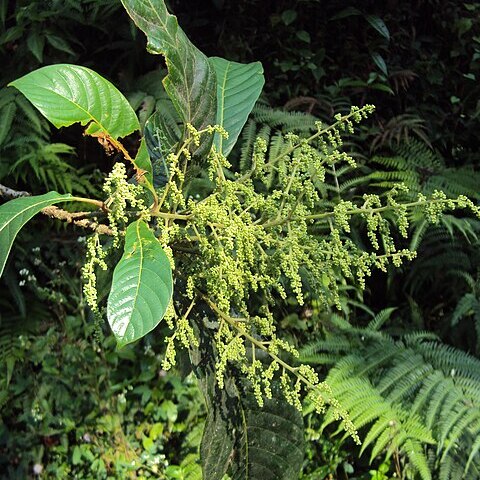Trees to 20 m tall, evergreen. Branchlets, petioles, and adaxial midveins on leaves brownish pubescent early. Leaves simple, usually clustered terminally; petiole 1.5-2.5 cm, broadly grooved; leaf blade obovate or obovate-oblong, 15-40 × 5-15 cm, papery, adaxially glabrous, vein axils crinite, lateral veins 15-20 pairs, arched-anastomosing near margin, reticulate veins slender and conspicuous, attenuate 2/3 to base, margin entire, sometimes serrulate, apex acute or shortly caudate. Panicle terminal, 10-40 cm, branched 3(or 4) times, axis nearly triangular. Flowers ca. 2 mm in diam., subsessile. Sepals (4 or)5, ovate-triangular, pubescent and ciliate. Petals white or yellowish white: 3 outer ones suborbicular; 2 inner ones ca. 0.7 mm, slightly shorter than stamens, deeply bifid at an angle; lobes narrow, shortly ciliate. Ovary glabrous; style equal or shorter than ovary. Drupe globose, 3.5-6 mm in diam.; endocarp compressed-globose, with sparse, scattered netlike strips, triangular adaxially, midrib distinct. Fl. Jan-Feb, fr. Apr-May.
A small tree. It keeps its leaves throughout the year. The branches have a dense covering. The leaves are simple. They are 12-40 cm long and light green. The flowers are in long woolly groups. They are white and turn pale yellow. The fruit is fleshy. It is 4-6 mm across.

